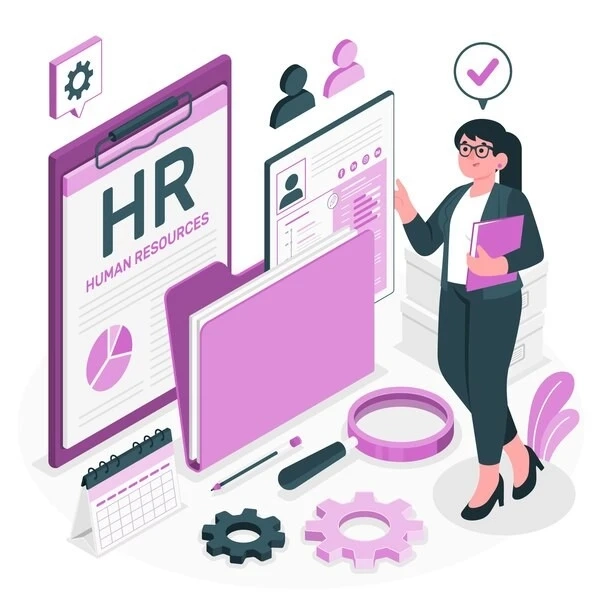Recently, there has been a notable shift in the Human Resources (HR) field, with technology playing a crucial part. The decision between Software as a Service (SaaS) and On-Premises solutions has become essential for Indian businesses looking to optimize their HR operations and make data-driven choices. The price of HR software is one of the main factors in this choice. We will examine the cost dynamics of HR software in India in this post, contrasting the costs of on-premises and SaaS solutions.
Recognizing the Up-front Expenses
When comparing HR software, it's critical to understand that SaaS and On-Premises solutions have different pricing structures. Let's start by looking at the initial costs.
1. SaaS HR Software
SaaS solutions are renowned for having minimal initial expenses. Users usually pay a monthly or annual subscription fee instead of buying software licenses. This subscription model allows companies to spread the cost of HR software over time, making it more affordable for startups and small to medium-sized enterprises (SMEs). SaaS is an appealing option in India because of its affordability, as many companies are cost-sensitive.
2. On-Premises HR Software
On the other hand, On-Premises solutions require a significant initial financial outlay. To host the system, businesses must invest in hardware infrastructure and purchase software licenses. Apart from the initial cost for Software and hardware, one may incur IT staff, maintenance, and upgrade expenses. When compared to SaaS options, this may result in higher initial costs.
Running Expenses Over Time
After the initial outlay, the cost of HR software keeps changing. Let's examine the recurring expenses related to SaaS and on-premises solutions in more detail.
1. SaaS HR Software
Updating, support, and maintenance are frequently covered by the subscription cost for SaaS solutions. This implies that SaaS companies won't worry about paying extra for IT staff or software maintenance. This can significantly benefit India, where finding and keeping qualified IT workers can be challenging.
2. On-Premises HR Software
On-premises solutions might need recurring costs for support, updates, and software upkeep. Businesses also need to budget for security measures, server maintenance, and the salaries of IT staff. These expenses can accrue over time and ultimately exceed the initial investment.
Flexibility and Scalability
Another important consideration when assessing the price of HR software is scalability. The requirements for HR software can alter as a company expands or experiences changes in the size of its workforce.
1. SaaS HR Software
SaaS solutions are frequently praised for their capacity to grow. Companies only pay for user licenses and can easily change the number of requests as needed. This flexibility is helpful for Indian businesses whose workforces may fluctuate seasonally or experience rapid growth.
2. On-Premises HR Software
An on-premises solution's scalability may be more difficult and expensive. Buying more licenses and making hardware purchases could be necessary to add more users or increase the system's functionality. This lack of adaptability may disadvantage Indian companies looking for agile solutions.
Costs of Security and Compliance
Users of HR software have two main concerns: security and compliance, particularly when handling sensitive employee data.
1. SaaS HR Software
SaaS vendors frequently invest significantly in security protocols and compliance certifications. Businesses may be spared the expense of data breaches or fines for noncompliance if this lessens their obligation to maintain data security and comply with regulations.
2. On-premises HR Software
Maintaining strong security and compliance measures for On-Premises solutions can be expensive and resource-intensive. Businesses are in charge of putting security protocols into place and keeping an eye on them, which can entail substantial recurring costs.
The Value of Cost-Benefit Evaluation
HR professionals in India must conduct a comprehensive cost-benefit analysis before deciding on HR software. The long-term effects on the effectiveness and competitiveness of the company should also be taken into account, in addition to the immediate financial ramifications.
Things to Consider in the Cost-Benefit Evaluation
Functionality: Determine whether the selected HR software's features and capabilities meet your company's unique requirements. A software program that successfully simplifies HR procedures can save money and effort.Return on Investment (ROI): Determine the anticipated return on investment by weighing the possible advantages—such as higher output, lower administrative costs, and better data accuracy—against the implementation and continuing costs.
User Experience: Take into account how easy the Software is to use. Higher adoption rates and quicker benefit realization are possible with an intuitive and simple-to-use solution for HR professionals in India.
Customization: Evaluate the Software's degree of customization. The system's value can be increased by customizing it to meet particular business needs, but this may incur additional costs.
Vendor Reputation and Support: Find out about the software vendor's standing and level of customer service. Dependent support can be beneficial to ensure that the Software is up and running as soon as possible.
Conclusion
One of India's most critical factors in HR software is its cost. On-premises and SaaS solutions have different cost dynamics. SaaS appeals to startups and SMEs due to its lower initial costs, scalability, and simplified ongoing expenses. Although they provide control and customization, on-premises solutions frequently have higher initial capital costs and continuous maintenance expenses.


